
The House of Hohenzollern is a German royal and from 1871 to 1918, imperial dynasty whose members were variously princes, electors, kings and emperors of Hohenzollern, Brandenburg, Prussia, the German Empire (respectively), and Romania. The family came from the area around the town of Hechingen in Swabia during the late 11th century and took their name from Hohenzollern Castle. The first ancestors of the Hohenzollerns were mentioned in 1061.

Sigmaringen is a town in southern Germany, in the state of Baden-Württemberg. Situated on the upper Danube, it is the capital of the Sigmaringen district.
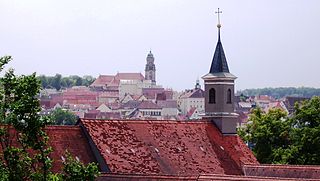
Hechingen is a town in central Baden-Württemberg, Germany. It is situated about 60 kilometres (37 mi) south of the state capital of Stuttgart and 90 kilometres (56 mi) north of Lake Constance and the Swiss border.
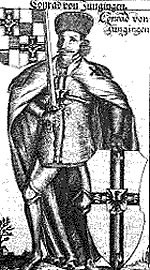
Konrad V von Jungingen was a grand master of the Teutonic Order in 1393-1407. Under his administration the Teutonic Order would reach their greatest extent.

Jungingen is a municipality in the Zollernalbkreis, Baden-Württemberg, Germany. It is located nearby the castle Burg Hohenzollern, about 5 km east of Hechingen.

Sigmaringen Castle was the princely castle and seat of government for the Princes of Hohenzollern-Sigmaringen. Situated in the Swabian Alb region of Baden-Württemberg, Germany, this castle dominates the skyline of the town of Sigmaringen. The castle was rebuilt following a fire in 1893, and only the towers of the earlier medieval fortress remain. Schloss Sigmaringen was a family estate of the Swabian Hohenzollern family, a cadet branch of the Hohenzollern family, from which the German Emperors and kings of Prussia came. During the closing months of World War II, Schloss Sigmaringen was briefly the seat of the Vichy French Government after France was liberated by the Allies. The castle and museums may be visited throughout the year, but only on guided tours. It is still owned by the Hohenzollern-Sigmaringen family, although they no longer reside there.
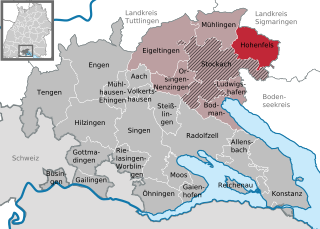
Hohenfels is a municipality in Konstanz district, in Baden-Württemberg, Germany.

The Upper Danube Nature Park (German: Naturpark Obere Donau), founded in 1980, is located in the south of Baden-Württemberg in Germany and encloses primarily the districts of Tuttlingen and Sigmaringen. It encompassed initially 860 km2 that were increased by about 500 km2 in 2005. The headquarters of the nature reserve association is at Beuron. The highest proportion of the nature park is taken up by the Heuberg, the south-western plateau of the Swabian Alb, and is punctuated by the Danube.
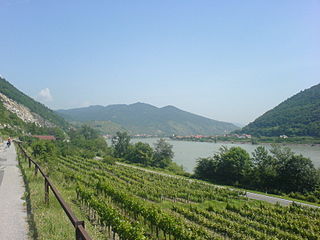
EuroVelo 6 (EV6), named the "Rivers Route", is a EuroVelo long-distance cycling route that runs along 3,653 km (2,270 mi) some of Europe's major rivers, including much of the Loire, some of the Saône, a short section of the upper Rhine and almost the entire length of Europe’s second longest river, the Danube — from the Atlantic coast of France to the city of Constanța on the Black Sea.
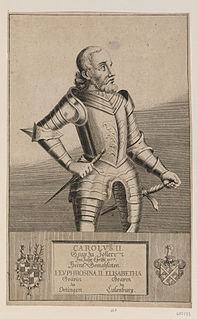
Charles II, Count of Hohenzollern-Sigmaringen(German: Karl II, Graf von Hohenzollern-Sigmaringen) became Count of Hohenzollern-Sigmaringen in 1576 and remained so until his death. He was the fifth but second surviving son of Charles I, Count of Hohenzollern, and Anna, daughter of Ernest, Margrave of Baden-Durlach.
Carl Gregor Herzog zu Mecklenburg was a German historian of music and art. He served as director of the Museum of the Roman Catholic Diocese of Rottenburg-Stuttgart for a period of 18 years, and was noted for his books on music and art. He was a member of the former Mecklenburg ducal family.

Werdenberg was a county of the Holy Roman Empire, within the Duchy of Swabia, situated on either side of the Alpine Rhine, including parts of what is now St. Gallen (Switzerland), Liechtenstein, and Vorarlberg (Austria). It was partitioned from Montfort in 1230. In 1260, it was divided into Werdenberg and Sargans.
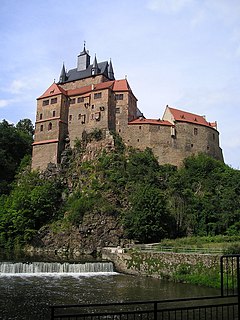
Kriebstein Castle is a castle in Kriebstein near the town of Waldheim in the German state of Saxony.
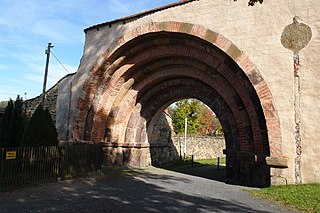
Altzella Abbey, also Altzelle Abbey, is a former Cistercian monastery near Nossen in Saxony, Germany. The former abbey contains the tombs of the Wettin margraves of Meissen from 1190 to 1381.

The Radolfzell–Mengen railway is a branch line in the German state of Baden-Württemberg. It runs from Radolfzell via Stockach to Mengen. The line was built as a mainline connection from Ulm via Lake Constance (Bodensee) to Switzerland. Regular passenger services were abandoned between 1972 and 1982. Passenger services were reactivated on the southern section between Radolfzell and Stockach in 1996 and has since been operated under the brand name of Seehäsle. The northern section from Stockach to Mengen is however only used for freight trains and passenger excursion trains. In 2005, it had to be temporarily closed because of the deterioration of the infrastructure on some sections.

Windeck Castle, also Old Windeck Castle, is a ruined Black Forest spur castle which stands on a 378-metre-high spur in the Bühl district of Kappelwindeck, in the county of Rastatt in the German state of Baden-Württemberg.

Mildenstein Castle, in German Burg Mildenstein, also called Schloss Leisnig, is located in Leisnig in Landkreis Mittelsachsen, Saxony, Germany. It is a property of the Free State of Saxony and is administrated by the company State Palaces, Castles and Gardens of Saxony.
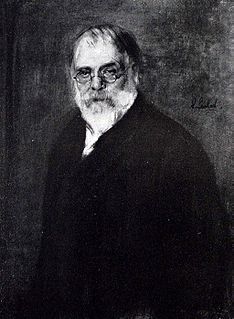
Alois Hauser was a German art restorer, court painter and curator.



















